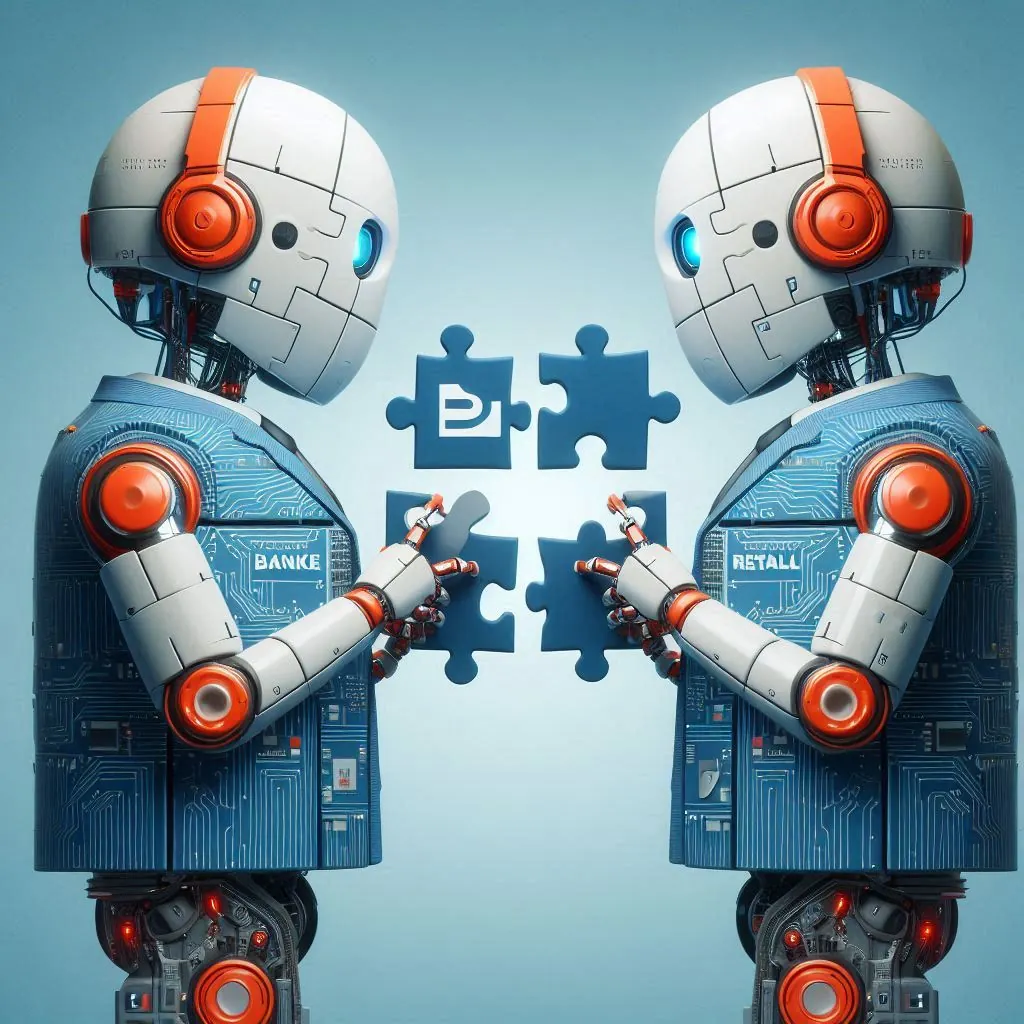In the ever-expanding landscape of connected devices and smart technologies, the Internet of Things (IoT) has revolutionized how data is generated and utilized. With billions of IoT devices deployed worldwide, the data these devices generate holds immense potential for improving efficiency, enabling automation, and driving innovation. However, traditional centralized data processing methods face mounting challenges, including privacy concerns, bandwidth limitations, and computational inefficiencies.
Enter Federated Learning (FL)—a distributed machine learning paradigm designed to address these issues. By enabling collaborative model training across decentralized devices without transferring raw data to a central server, FL ensures privacy preservation and efficient data utilization. Particularly in IoT and Edge computing scenarios, Federated Learning offers a robust solution to harnessing the vast, geographically dispersed datasets inherent to these environments.
FL’s unique ability to train models while maintaining data sovereignty positions it as a cornerstone for future AI advancements. Among its methodologies, Horizontal Federated Learning (HFL) and Vertical Federated Learning (VFL) stand out as two distinct approaches, each tailored to specific data distribution challenges.
In this comprehensive exploration, we delve into the nuances of FL in the IoT and Edge computing landscape, focusing on the synergy between HFL and VFL. Through practical use cases, challenges, and solutions, this long-read article aims to illuminate FL’s transformative potential, particularly when vast data resides on peripheral devices, making centralized collection impractical.
Horizontal and Vertical Federated Learning: Key Features and Applications
Federated Learning (FL) adapts to diverse data scenarios using two primary approaches—Horizontal Federated Learning (HFL) and Vertical Federated Learning (VFL). These frameworks address the needs of distributed systems where data is partitioned differently among participants. Their flexibility makes them particularly relevant for IoT and Edge computing, where decentralized data environments are the norm.
Horizontal Federated Learning (HFL)
HFL is used when datasets share the same feature space but contain different sets of entities. This typically arises in environments where multiple entities or devices hold similar types of data but for distinct individuals or cases.
Key Features of HFL:
- Data Partitioning: The data is divided into samples so that participants work with unique subsets of the shared set of entities.
- Model Training: Each device trains a local model on its data subset and sends updates to a central server for aggregation.
- Use Case Example: Consider a network of banks training a model to predict credit risk. For each of its clients, a bank can form a fixed set of features (e.g., income level, credit rating, etc.), while the list of clients for each bank remains unique. HFL enables collaboration to build a robust global model without exposing individual customer data.
HFL Scenarios in IoT:
- Cross-Device Federated Learning: IoT devices such as smartphones collaboratively improve voice recognition algorithms by training models locally and sharing updates.
- Cross-Silo Federated Learning: Organizations with distinct datasets, like regional smart grids, jointly develop predictive models for energy usage.
Vertical Federated Learning (VFL)
VFL is designed for cases where datasets overlap in entities but differ in feature space. This approach is especially useful when multiple organizations or devices have complementary data about the same objects or individuals.
Key Features of VFL:
- Data Partitioning: Divides data by feature space, leveraging shared samples across different data owners.
- Model Training: Participants align datasets and collaboratively train a model using cryptographic protocols to preserve privacy.
- Use Case Example: A retailer and a bank collaborate to predict purchasing power. The retailer provides shopping preferences, while the bank contributes financial data. Combined, these datasets produce a more comprehensive predictive model.
VFL Scenarios in IoT:
- Smart Healthcare: Wearable devices track vitals (heart rate, glucose levels) while hospitals maintain medical histories. VFL enables integrated health monitoring without centralizing sensitive data.
- Autonomous Vehicles: Vehicle sensors analyze local environmental data, while cloud servers integrate map and traffic insights.
Comparative Summary
| Feature | Horizontal Federated Learning | Vertical Federated Learning |
|---|---|---|
| Data Partitioning | By sample space | By feature space |
| Training Scenario | Cross-device, Cross-silo | Cross-silo |
| Data Transmitted | Model parameters | Intermediate results |
| Independent Inference | Yes | No |
The integration of HFL and VFL models, sometimes referred to as Hybrid Federated Learning, is gaining traction in IoT and Edge systems. Such frameworks allow for simultaneous horizontal and vertical data handling, unlocking new possibilities for distributed AI.
For example, a scenario is possible where IoT devices process local data, while centralized analytical platforms complement it with characteristics from various sources.
Applications of Federated Learning in IoT and Edge Computing
Federated Learning (FL) addresses key challenges in IoT and Edge computing by enabling decentralized data utilization. Its privacy-preserving and resource-efficient nature aligns perfectly with the distributed ecosystems of IoT devices. Here are pivotal domains where FL transforms processes:
1. Industry 4.0: Revolutionizing Manufacturing
IoT-driven factories are at the forefront of Industry 4.0, generating massive data streams for process optimization, predictive maintenance, and supply chain management. However, data centralization often clashes with proprietary concerns.
- Federated Learning’s Role: FL enables collaboration among industrial units to train models for defect detection or quality control without exposing sensitive manufacturing data.
- Example: Optical Character Recognition (OCR) for quality inspection uses distributed sensor data to improve recognition models collaboratively.
2. Smart Healthcare
Wearable devices and medical IoT tools capture detailed health data from patients. This data, combined with hospital records, can revolutionize personalized medicine but requires stringent privacy compliance.
- Federated Learning’s Role: FL facilitates the development of global health models by leveraging decentralized data from multiple hospitals and devices.
- Example: A system predicting early-stage diseases combines vitals from wearables and patient histories from hospitals without compromising patient confidentiality.
3. Smart Cities: Enhancing Urban Living
Smart cities deploy IoT devices for traffic management, energy optimization, public safety, and beyond. Managing and analyzing the resulting data requires robust, scalable systems.
- Federated Learning’s Role: FL enables data-sharing among devices while keeping individual data local, such as training traffic prediction models using decentralized sensors.
- Example: In smart grids, FL aggregates consumption data from homes to optimize energy distribution without revealing individual patterns.
4. Autonomous Vehicles
Self-driving cars rely on immense datasets to refine navigation, obstacle detection, and traffic management systems. Centralizing this data is resource-intensive and risks privacy breaches.
- Federated Learning’s Role: Vehicles update local models with global improvements via FL, ensuring adaptive learning without data pooling.
- Example: Edge-based FL allows cars to share road insights collectively, improving response times to environmental changes.
5. Smart Homes and Consumer IoT
IoT-enabled homes feature devices like smart speakers, cameras, and thermostats, generating user data. Centralized processing can lead to privacy concerns.
- Federated Learning’s Role: FL enhances on-device learning, improving personalization while protecting data sovereignty.
- Example: FL-trained voice assistants adapt to user preferences locally while contributing to broader accuracy improvements.
6. The Metaverse and Virtual Reality
The metaverse demands real-time data processing from IoT-enabled AR/VR devices to simulate seamless virtual experiences. Privacy concerns arise as wearable devices track sensitive user behavior.
- Federated Learning’s Role: FL supports privacy-compliant analytics of motion and interaction data, ensuring secure and collaborative model improvements.
- Example: FL integrates motion tracking and eye-tracking insights to enhance immersive VR environments while safeguarding user data.
7. Agriculture and Environmental Monitoring
IoT devices in precision agriculture collect data to monitor soil conditions, weather, and crop health. Data centralization challenges arise due to the rural location of sensors.
- Federated Learning’s Role: FL facilitates collaborative model training across farms to develop predictive models for pest management and yield optimization.
- Example: Farmers use FL-enhanced devices for localized crop monitoring while contributing to global agricultural insights.
Impact on IoT and Edge Computing
- Privacy-First Design: Raw data never leaves the device, addressing privacy regulations like GDPR.
- Bandwidth Efficiency: Model updates are lighter than transferring raw data, reducing communication costs.
- Scalability: FL seamlessly scales as more IoT devices join the network, leveraging their computational power.
By bridging diverse sectors, Federated Learning redefines IoT and Edge computing, unlocking its full potential across industries.
Advantages of Federated Learning for IoT
As the Internet of Things (IoT) grows exponentially, handling its vast and sensitive data poses unique challenges. Federated Learning (FL) emerges as a solution that addresses these concerns, delivering distinct advantages essential for IoT's distributed nature.
1. Privacy Preservation
In traditional centralized systems, raw data is transferred to central servers for processing. This approach creates vulnerabilities such as exposure to cyberattacks or misuse of personal data. Privacy is paramount, especially when IoT devices collect sensitive information like health metrics, behavioral patterns, or location data.
How FL Solves It:
- Data Stays Local: Federated Learning ensures raw data never leaves the device, significantly reducing the risk of breaches.
- Regulatory Compliance: By maintaining local data sovereignty, FL aligns with global privacy regulations such as GDPR and CCPA.
Example:
In healthcare IoT, smart wearables record patient vitals. FL allows these devices to contribute to disease prediction models without exposing personal health records, ensuring both security and compliance.
2. Bandwidth Efficiency
The explosive growth of IoT devices puts immense strain on network infrastructure. Transmitting raw data from billions of devices to a central server is not only impractical but also cost-prohibitive.
How FL Solves It:
- Reduced Communication Overhead: Instead of raw data, FL transfers model updates (e.g., gradients or weights), which are significantly smaller in size.
- Asynchronous Updates: FL allows IoT devices to communicate at intervals, optimizing bandwidth usage.
Example:
In smart city applications, sensors across the city collaboratively train traffic models. By only sending updates rather than streaming video feeds or raw logs, FL drastically reduces data transmission costs.
3. Scalability
IoT ecosystems are inherently scalable, with millions of devices continuously added. Centralized systems struggle to manage this growth due to bottlenecks in data processing and storage.
How FL Solves It:
- Decentralized Learning: FL leverages the computational power of edge devices, eliminating the need for centralized resources.
- Edge-First Design: Devices contribute proportionally to their computational capacity, ensuring even large-scale deployments remain efficient.
Example:
In autonomous vehicle networks, each car trains on local driving data. FL’s ability to aggregate insights across thousands of vehicles in real time supports rapid scalability without overloading servers.
4. Energy Efficiency
IoT devices often operate under strict energy constraints, especially in remote or mobile settings.
How FL Solves It:
- Lightweight Models: FL focuses on optimizing communication and computation, minimizing energy usage.
- Adaptive Training: Devices can pause updates during low battery conditions, ensuring uninterrupted operation.
Example:
A network of environmental sensors in remote forests uses FL to analyze weather patterns, transmitting only model updates when energy reserves are sufficient.
5. Collaboration Without Data Sharing
IoT applications frequently involve multiple stakeholders, such as companies or municipalities, that are reluctant to share raw data due to competition or privacy concerns.
How FL Solves It:
- Data Isolation: FL allows stakeholders to collaborate on model training without exposing their individual datasets.
- Cryptographic Protections: Techniques like secure aggregation ensure even model updates remain unintelligible to other parties.
Example:
In agriculture, farmers with IoT-enabled equipment collaborate to develop predictive yield models. Each farmer retains control over their proprietary data while benefiting from the collective insights.
Federated Learning equips IoT ecosystems with the tools needed to address privacy, bandwidth, scalability, and energy concerns. By decentralizing AI model training, FL not only preserves data security but also ensures efficient and scalable growth, empowering IoT to reach its full potential.
Challenges in Federated Learning for IoT and Their Solutions
While Federated Learning (FL) is a promising solution for IoT, its implementation comes with significant challenges. These obstacles arise from the decentralized, resource-constrained, and heterogeneous nature of IoT environments. Addressing these challenges is crucial to unlocking FL's full potential.
1. Computational Limitations of IoT Devices
IoT devices often have limited processing power, memory, and energy resources. Training machine learning models, especially deep neural networks, can overwhelm these devices, leading to inefficiencies or system failures.
Challenges:
- Resource Constraints: Running computationally heavy models may exceed the hardware capabilities of IoT devices.
- Energy Consumption: Prolonged training can drain batteries in mobile or remote devices.
Solutions:
- Lightweight Models: Researchers are developing smaller, hardware-friendly models optimized for edge environments. For instance, pruning and quantization techniques reduce model size while maintaining accuracy.
- Edge-Cloud Collaboration: Systems like FedGKT offload complex tasks to nearby edge gateways or cloud servers, allowing IoT devices to handle simpler computations.
Example:
FedMask enables resource-efficient learning by generating sparse models, reducing both computation and memory requirements for devices.
2. Connectivity and Network Bandwidth Issues
FL relies on frequent communication between IoT devices and central servers or edge nodes. However, IoT networks often face intermittent connectivity, low bandwidth, and high latency, especially in remote areas.
Challenges:
- Straggler Devices: Slow or offline devices delay the overall model training process.
- Bandwidth Constraints: Limited network resources can bottleneck communication, increasing training time.
Solutions:
- Asynchronous Aggregation: Techniques like FedBuff mitigate delays by buffering updates until a sufficient number are received, allowing faster devices to contribute without waiting for slower ones.
- Compression Techniques: Gradient compression reduces the size of updates transmitted over the network, lowering bandwidth demands.
Example:
Mercury uses importance sampling to prioritize updates from devices with critical contributions, optimizing bandwidth use and training quality.
3. Security Concerns
The distributed nature of FL exposes systems to potential attacks, such as malicious participants corrupting models or extracting sensitive information from shared updates.
Challenges:
- Data Leakage: Even without sharing raw data, adversaries can infer sensitive information from model updates (e.g., via gradient inversion).
- Malicious Actors: Rogue devices can manipulate the global model by submitting poisoned updates.
Solutions:
- Secure Aggregation: Encryption protocols, such as additive masking, ensure that updates remain private, even from the central server.
- Anomaly Detection: Systems like DIoT monitor updates for unusual patterns, identifying and mitigating attacks during training.
- Robust Aggregation: Algorithms like Krum and Trimmed Mean limit the influence of outlier updates, ensuring model integrity.
Example:
DIoT uses FL to detect IoT gateway intrusions without exposing local data, ensuring secure and resilient operations.
4. System Heterogeneity
IoT devices vary widely in computational capacity, network connectivity, and data quality, leading to inconsistent contributions during training.
Challenges:
- Non-IID Data: Data distributions across devices are often non-independent and non-identically distributed, complicating model convergence.
- Hardware Diversity: Devices may use different architectures, operating systems, and deep learning frameworks, creating integration challenges.
Solutions:
- Personalized Models: Systems like FedProx account for device heterogeneity by allowing partial updates and personalized models tailored to local datasets.
- Cross-Platform Tools: Frameworks like FedIoT enable seamless integration across diverse hardware and software environments.
Example:
HeteroFL generates custom model architectures for each device, balancing accuracy and computational feasibility based on individual capabilities.
5. Adapting to Temporal Dynamics
IoT devices continuously generate new data, requiring FL systems to support ongoing, adaptive learning. However, this can lead to challenges like catastrophic forgetting or unbalanced model updates.
Challenges:
- Dynamic Data Streams: The continuous influx of new data can overwhelm devices or disrupt training stability.
- Catastrophic Forgetting: Models may lose accuracy on older data as they adapt to newer inputs.
Solutions:
- Continual Learning Techniques: Systems like FedGKT use knowledge transfer to adapt models incrementally without forgetting previous insights.
- Clustering Core Data: Selectively storing representative samples ensures models retain critical knowledge.
Example:
In smart homes, IoT devices adapt lighting or security algorithms based on changing user behaviors while maintaining performance on prior patterns.
6. Standardization Gaps
The lack of standardized protocols, tools, and benchmarks for FL in IoT hampers widespread adoption and system interoperability.
Solutions:
- Development Frameworks: Platforms like TensorFlow Federated and FedML provide developers with tools to implement FL in IoT environments.
- Open Standards: Collaborative efforts to establish benchmarks for FL performance across diverse IoT use cases drive adoption.
Example:
FedIoT offers prebuilt configurations for deploying FL across common IoT platforms like Raspberry Pi and NVIDIA Jetson Nano.
The challenges of Federated Learning in IoT—ranging from computational constraints to security risks—underscore the complexity of implementing distributed AI. However, ongoing research and innovative solutions, such as lightweight models, secure protocols, and adaptive frameworks, are steadily overcoming these barriers. With continued advancements, FL is poised to become a foundational technology for decentralized IoT ecosystems.
Use Cases of Federated Learning for Single Data Owners with Peripheral Devices
In scenarios where data is generated on a vast number of peripheral devices, centralizing raw data for machine learning is often impractical due to bandwidth limitations, privacy concerns, or storage constraints. Federated Learning (FL) offers a transformative solution, enabling a single data owner to train robust models by leveraging data distributed across edge devices.
Key Scenarios
1. Industrial IoT
In manufacturing environments, IoT-enabled devices such as sensors and actuators continuously generate operational data. These datasets, though essential for optimizing processes, are often too large or sensitive to transmit centrally.
- Example: A manufacturing firm deploys FL to monitor equipment performance using data collected from hundreds of factory sensors. Localized learning models help detect anomalies or predict failures without transmitting raw sensor data to a central server.
- Benefit: This reduces communication costs and ensures that sensitive proprietary data remains within the facility.
2. Remote Monitoring Systems
In sectors like environmental monitoring or agriculture, devices deployed in remote or inaccessible areas collect critical data. Transmitting this data to central servers is infeasible due to connectivity constraints.
- Example: FL powers a network of weather stations in rural areas to train models for predicting extreme weather. These stations share model updates via intermittent connectivity, improving accuracy without relying on continuous high-bandwidth communication.
- Benefit: The system ensures robust forecasting while minimizing energy consumption and network dependency.
3. Healthcare IoT
Hospitals and clinics often manage IoT devices such as wearable health monitors or diagnostic machines. Aggregating sensitive patient data in a central server raises privacy concerns and may violate regulatory standards.
- Example: A hospital network uses FL to train models for early disease detection, aggregating insights from distributed wearable devices monitoring heart rate or glucose levels.
- Benefit: By keeping patient data on local devices, the hospital enhances privacy compliance while building precise predictive models.
4. Smart Retail
Retail chains increasingly utilize IoT devices for inventory management, customer behavior analysis, and personalized marketing. Peripheral devices like smart cameras or checkout sensors generate data that can improve business strategies.
- Example: A retail giant employs FL to analyze customer foot traffic patterns across stores, using IoT-enabled cameras to locally process video feeds.
- Benefit: Insights are shared without transferring raw video data, preserving customer privacy and reducing operational costs.
5. Autonomous Infrastructure Systems
Critical infrastructure such as energy grids or transportation systems relies on distributed IoT devices for real-time data analysis and control. These systems require continuous learning to adapt to changing conditions.
- Example: A power company uses FL to train models predicting energy demand across smart meters. Each meter contributes updates based on local usage patterns.
- Benefit: FL minimizes latency in updating demand models while ensuring that raw usage data remains decentralized.
Why Federated Learning?
1. Privacy and Compliance
For single data owners, maintaining control over sensitive data is critical, especially in regulated sectors like healthcare and finance. FL allows for insights without exposing raw data, ensuring adherence to privacy laws like GDPR and HIPAA.
2. Cost Efficiency
By transmitting only model updates rather than raw data, FL significantly reduces bandwidth consumption and storage costs. This is crucial for data owners managing extensive IoT networks.
3. Adaptability to Connectivity Constraints
FL thrives in environments with limited or intermittent connectivity, enabling remote devices to contribute to learning processes without constant server communication.
4. Enhanced Collaboration Across Devices
Even within a single organization, devices may vary in capabilities and data types. FL harmonizes these disparities, enabling unified model training across diverse data sources.
Federated Learning provides an indispensable framework for single data owners managing vast, distributed datasets. From industrial IoT to healthcare and retail, its ability to decentralize machine learning while preserving privacy and reducing costs positions it as a game-changer in data-driven innovation.
Conclusion and Future Directions
Federated Learning (FL) is reshaping the landscape of IoT and Edge computing, offering a decentralized framework for training machine learning models while addressing critical challenges like data privacy, bandwidth limitations, and computational constraints. By keeping data local to devices, FL ensures security and efficiency, aligning with the requirements of modern distributed systems.
From autonomous vehicles and smart cities to healthcare and industrial IoT, FL has proven its adaptability and effectiveness across diverse applications. It empowers organizations and individuals to leverage decentralized data for predictive insights, operational efficiency, and enhanced personalization, all without compromising user privacy or incurring prohibitive infrastructure costs.
The integration of FL with advanced technologies such as 5G pushes the boundaries of performance and accelerates data exchange between devices. This is particularly relevant for processing large volumes of distributed data in real-time, typical of IoT environments such as smart cities, autonomous transportation systems, and smart healthcare.
Additionally, FL offers unique opportunities to meet the requirements of regulatory standards like GDPR. Local data storage and the transmission of only aggregated model updates minimize the risk of data breaches and eliminate the need for significant changes to existing data infrastructure. This approach not only ensures a high level of privacy and security but also simplifies compliance with regulations while maintaining the scalability and efficiency of distributed systems.
Emerging Trends and Future Research Directions
1. Hybrid Federated Learning Models
Combining Horizontal and Vertical Federated Learning approaches opens new possibilities for handling both feature-partitioned and sample-partitioned data simultaneously. This hybrid model holds promise for applications requiring comprehensive insights from diverse data sources, such as collaborative medical research or multi-modal IoT systems.
2. Improved Privacy-Preserving Techniques
While FL minimizes data exposure, challenges like gradient inversion attacks persist. Future advancements in techniques like differential privacy, secure multi-party computation, and homomorphic encryption will enhance the robustness of FL against evolving cyber threats.
3. Energy-Efficient and Lightweight Models
Developing FL-friendly algorithms that optimize resource consumption on edge devices will further broaden FL’s applicability. Techniques such as model pruning, quantization, and adaptive training schedules will help accommodate devices with limited computational power.
4. Enhanced Interoperability and Standardization
As FL adoption grows, establishing open standards and cross-platform compatibility will become critical. Initiatives to create interoperable frameworks will facilitate seamless integration across heterogeneous IoT ecosystems.
5. Continuous and Transfer Learning
Integrating FL with continual and transfer learning methods will enable models to adapt to dynamic environments and leverage knowledge from similar tasks. This is especially crucial for IoT systems dealing with real-time data evolution.
Transforming the Future of IoT and Edge Computing
Federated Learning is more than a technical solution; it is a paradigm shift in how we approach data and machine learning in distributed systems. Its ability to bridge the gap between data privacy and AI innovation ensures its place as a foundational technology in the era of IoT. By addressing current challenges and embracing emerging trends, FL will unlock new frontiers in smart technologies, driving progress in industries and enhancing the quality of everyday life.




